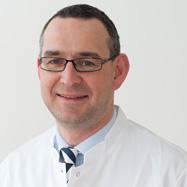|
Image Guidance Potentials for Prior Open Spinal Procedures and Minimally-invasive Spinal Surgeries (Dienstag, 08.30 Uhr, Schinkelsaal) |
 |
Over the last decade minimally invasive spinal procedure took a considerable percentage of all spinal surgeries performed. A whole armamentarium of implants and instruments is currently available as well as a range of different spinal minimally invasive spinal procedures for almost every spinal pathology.
As the scientific basis for the use of those techniques is improving the usefulness of different techniques for specific spinal pathologies has been is today much clearer than a decade ago.
One fact is given for any of the procedures and techniques that minimally invasive means inevitably relying more on imaging than with any open technology. Imaging technology is a conditio sine qua non for minimally invasive spinal procedures.
Fluoroscopy is the basic required technology but demanding for the surgeon. The use of spinal navigation either conventional CT based or as intraoperative 3D fluoroscopy or CT Based navigation offers a full new range of possibilities for safety and efficacy of minimally invasive spinal procedures.
In addition overlay techniques could improve visualization and imagination of the surgeons. Some of possible future application intra operatively as well as for the planning of those procedure will be presented (e.g. MRI sequence overlaid in the microscope).
The aging population and raising number of performed spinal surgeries will lead to an increased need for revision surgeries and more demanding procedures in metastatic, infectious and degenerative pathologies. The potential of minimally invasive procedure (e.g. thermal ablation for metastatic disease) could be to enhance the effect of prior spinal procedures or make a revision easier using minimally invasive pathways around the scares as well as replacing open procedure with all the negative side effects at some points at all. The continuous introduction of modern imaging technologies could lead this way with a lot of potential.
Dr. Jörg Franke
Universität Dortmund, Direktor der Klinik für Wirbelsäulenchirurgie

